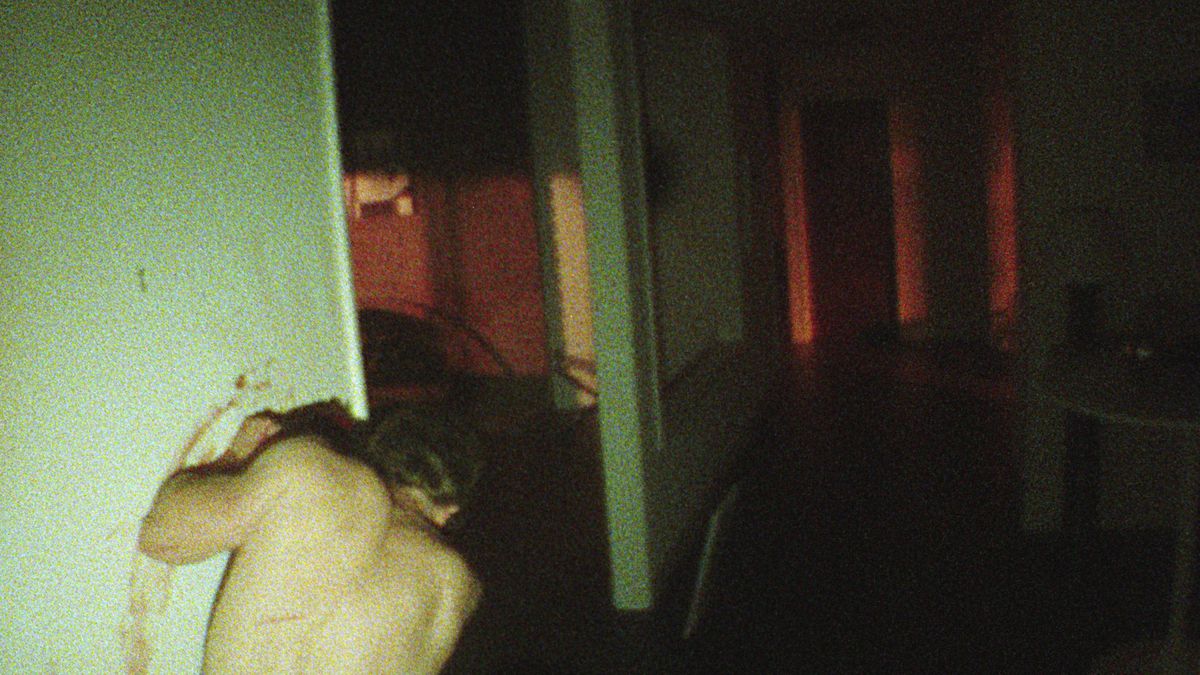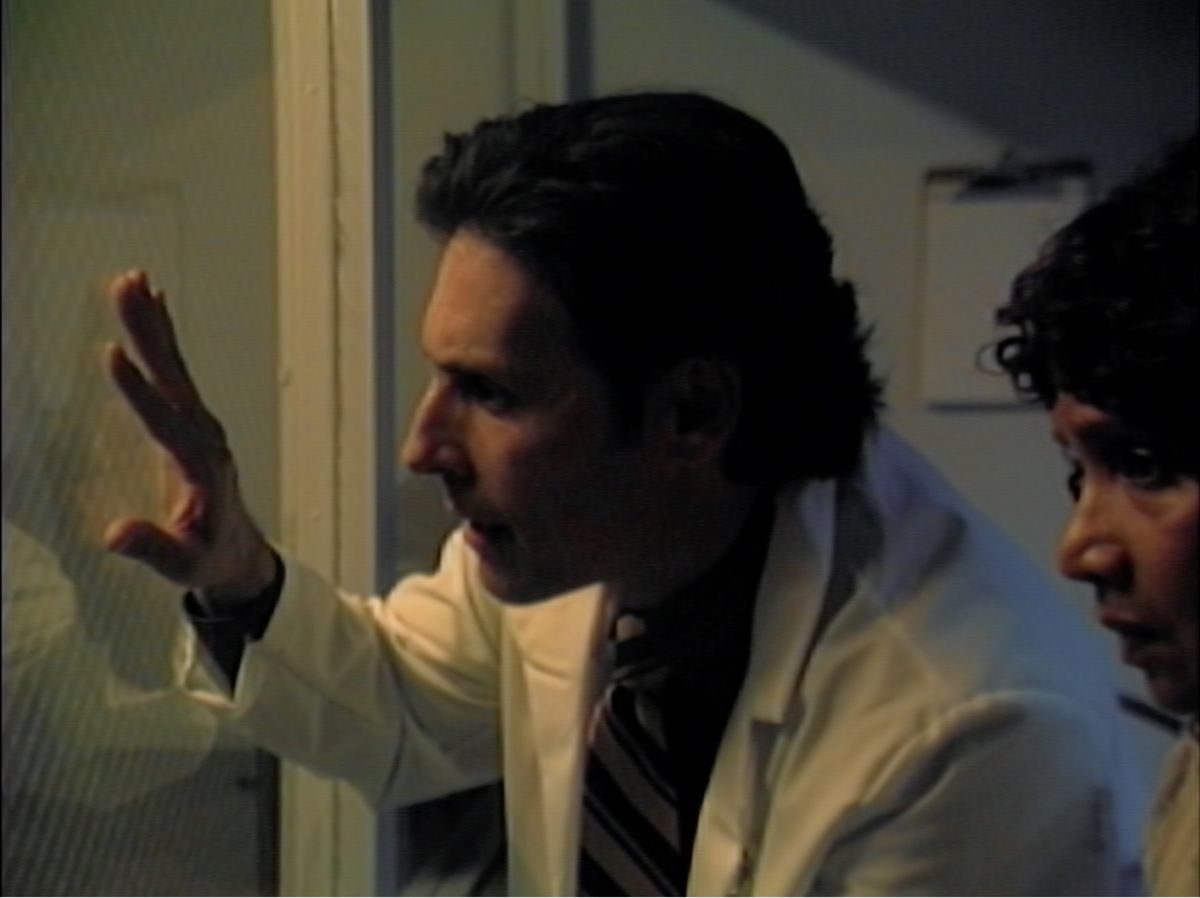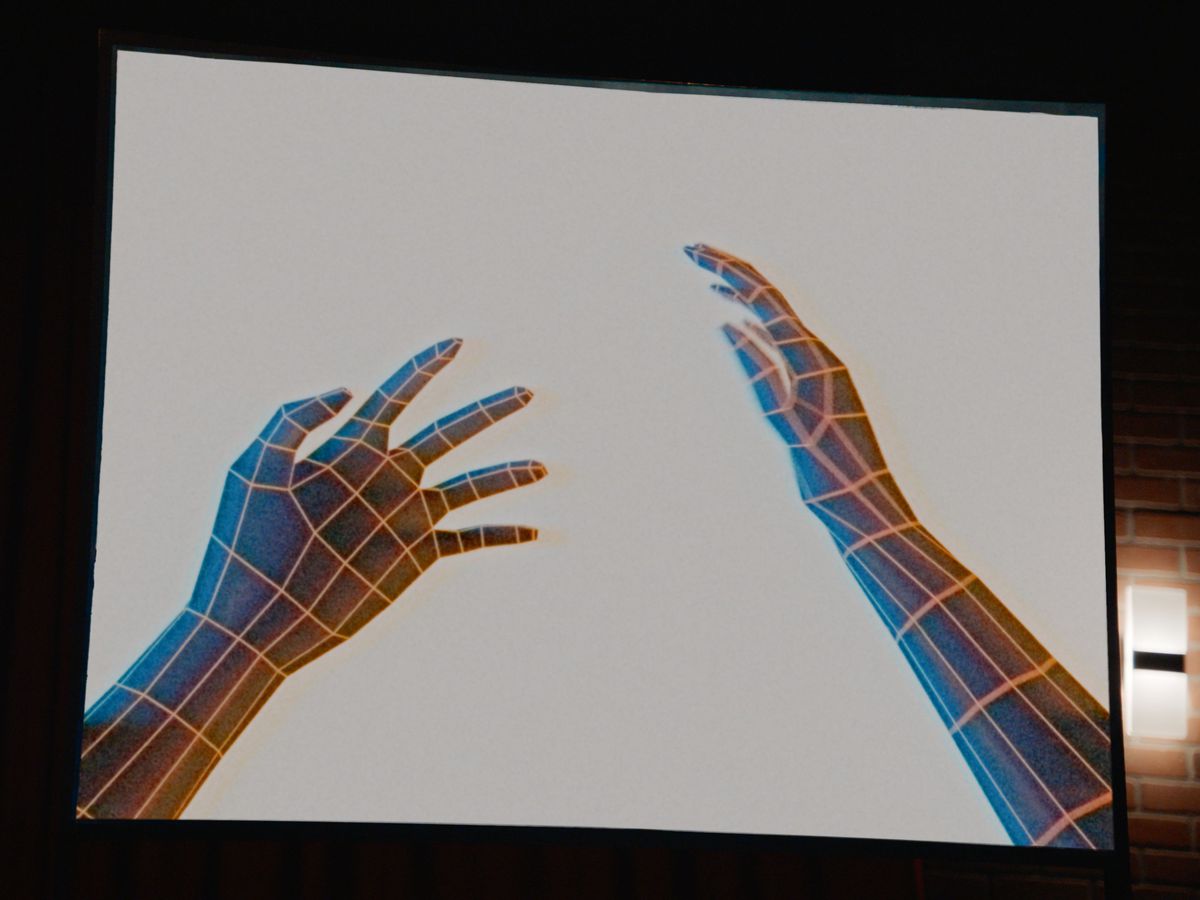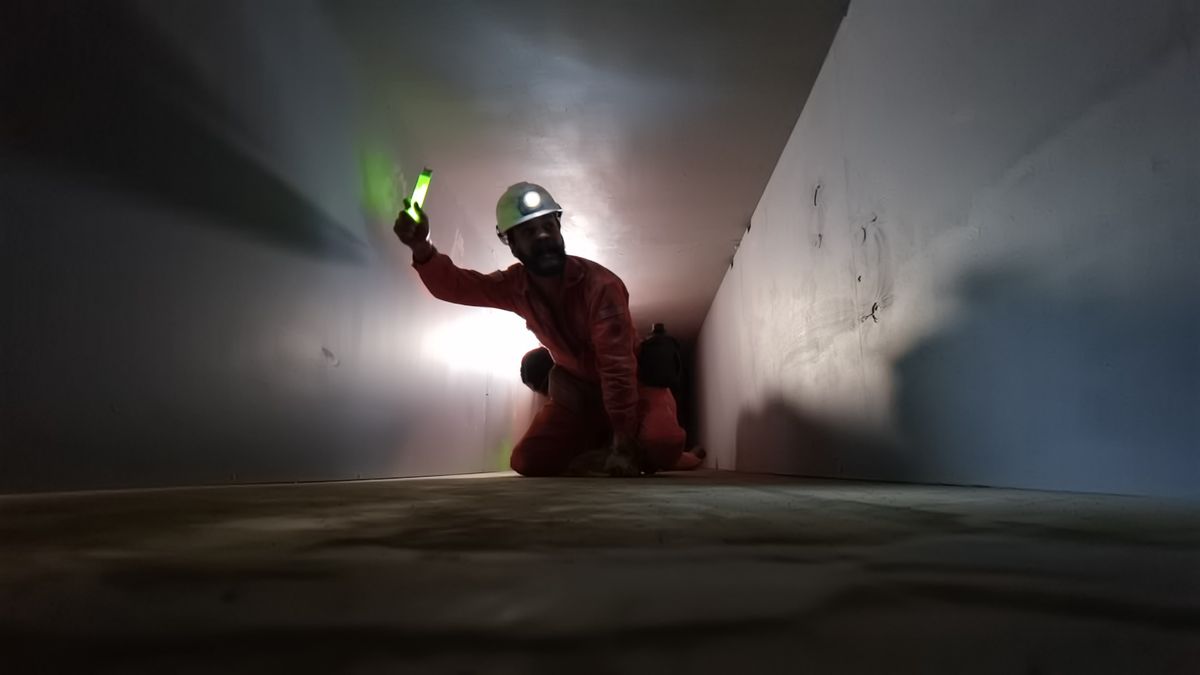V/H/S/85’s directors on why they loved making ‘fuck-you movies’
It’s been a little over a decade since the original horror anthology V/H/S helped kickstart a full season of horror in which the theme of the mourning anthology (The ABCs of death, Halloween stories, holidaysetc. ) suddenly became an underground hit – and a major proving ground for young artists showcasing their sessions to fund full-length features.
Market oversaturation eventually slowed demand for these projects, but the OG, the V/H/S series, was maintained by trucking. 2013’s V/H/S/2 and 2014’s V/H/S: Viral finally united with the original horrors V/H/S/94 in 2011 and V/H/S/99 2022. Now rushes the last in the series; V/H/S/85a collection of five segments (one connected to the other films) all visually based around 1980s invented footage technology.
This particular institution in the series of anthologies is sharper, more wonderful, and more important than some of the others, partly because of its star directness; V/H/S/94 and 99 by David BrucknerRoman ritual, Night House), Natasha Kermani (Lucky, Imitation Girl) Mike P. NelsonWrong Turn, domestics) Gigi Saul Guerrero (Cultural impact, Bingo Hell) and Scott Derrickson (Doctor Strange, Black phone).
All five directors were left in a Q&A after the world premiere at Fantastic Fest 2023, where Bruckner caused an uproar when he told the audience that he had brought the other directors into a plan to say “V/H/S movies are funny. -tu movies”, a sentiment everyone seemed to enthusiastically agree with. Of course, when Polygon sat down with all five directors at the Fantastic Fest, we had to find out what this means, both for the directors and for the careers of the series.

Image: I shudder
Polygon: So what is your “fut-movie” and why did you sell it to everyone to make it so important?
Gigi Saul Guerrero director of “God of Death”: It means a plan where you don’t fear yourself as a filmmaker, but also push yourself with what you know you can’t do a proper job. (he laughs) One that gives you the ability not to be afraid of offending the audience. He’s not afraid to leave them with any lasting discomfort. And actually capture something that maybe scares you personally as well.
Mike P. Nelson, director of “No Wake”/”Ambrosia”: Every so often, when a more normal movie or commercial is given, you’re asked to pull back. It was the opposite of this one. He was like, “No, go full out and have fun with it.”
Guerrero: No filter!
Natasha Kermani, director of “TKNOGD”: A license to be small and ugly.
Scott Derrickson, director of “Dreamkill”: It’s an opportunity to build really strong fences without the fear of a major plumbing failure that will ruin your life. It is very free to do so.
David Bruckner, director of “Total Model”: When you’re working on a feature, especially on studio systems, it’s a bit like steering a vehicle. There is no need for large property, there is no need for property. There is a lot to confirm when having three acts in a work, you will have the audience’s attention for 90 minutes or more. It is an immense present.
And the part is this: these vague remains are strangely small. There are devices that have been discovered at a certain point so that anything can happen. It doesn’t have to be structured. And you find yourself asking a variety of questions in the setting. This state of mind is very purified; What do you want to see now? No roof holds. And this is refreshing to me. To be paid.

Image: I shudder
Natasha, you made that point in the Q&A about being excited to make “ugly” movies once, and that’s something everyone else has highlighted here. Why is it possible to inspire something ugly?
Kermani: I think we all love the language. Each filmmaker here is a master of his craft. But I think a lot of the time, that idea is that whatever “beautiful” means, that language of motion is necessary for the quality of the commercial film. Since V/H/S/85 Scott in particular talked a lot about how the medium of the message is, we get into this really rocky visual space. “Glitch” was one of our keywords.
My DP exclaimed when he saw the final version of our movie. (he laughs) please; You can’t see anything! Like, yeah, it’s VHS, so you can’t watch shit. So I think it’s really a let down – actors can look crazy. You’re going to have moments where some part of the screen just goes black, there’s nothing there. The embrace seems to me to be a disgrace, an archer, and a very disgusting sport. Because we usually do the opposite. How can we look at this beautiful star? As a free
Guerrero: Like it’s not perfect. We think a lot about makeup and a polished look. Found footage, the actors with the camera has a natural. As you have seen, we stop, we recite, we throw. But these films are just that; Do the fucking and see what happens. So it feels natural. But definitely, I think, all of our filmmakers had a lot of trauma after that. It is more difficult for them not to be perfect than to move something.
Derrickson: Brett (Jutkiewicz), who was shot Black phone To me, one of the reasons he said yes to this is because I thought he should be shooting ’80s cameras and everything analog. Thank you very much. And the Super 8 footage I inserted in an attempt to mess with the V/H/S franchise format.
When we talk about “ugliness” then, it is a beautiful ugliness. Everything people are trying not to have visible in their photos now. Higher consistency, clearer, perfect clarity – all watching things have grown in the low things, and it’s exactly the beauty of it. And not the nostalgic thing, but the actual capture of what the cameras did at that time, was really interesting to me.

Image: I shudder
Nelson: I was trying to get a look at the way home movies were rejected then, just as they are today. Even with camera phones, people will put cool corners and small circles. But I was so inspired by my old father. He had one of those old Magnavox cameras that were shoulder pads that he had to carry around to the VCR. And he contended that there was a definite fight, and that it lasted perhaps only an hour.
I loved watching how things were shot, because it was a very new medium for the industry. People were shooting on Super 8 and 16mm before this, home movies, but this was new. The cameras were giants. One of the shots that always kills me – it’s like literally every home movie time, whether it’s Christmas or Easter, at a picnic by the lake, it’s a long shot of people watching doing things. When you revisit that memory, when you put it on the VCR, you’re just I have it, Father. I see them.
And then you have a random person who gets up in front of the camera and tries to show off. One of the things that always got me in the movies of old houses was the people who wanted to come in and show their lizards. Yes, that was always the case. I just love how often people come up and bow to the camera? I love you. So exploring how to shoot that way, how to shoot in the wrong way and feel really fun with the story, I think it’s a fun exploration and a challenge.
Guerrero: We also shoot on a VHS camera, and it’s so light it feels like playing with a toy camera. And we didn’t have the luxury of making a play because it hurt the tape. We learned that in our first tape! So we just want to send it as a VHS, probably like Pops (Nelson) never went back and looked at what the player was going to send, to wait and watch with everyone else. And we had to do the same. So it was kind of like that That’s right, just three for everyone.

Image: I shudder
Did they use all the technology back then to fix it with modern cameras and then reverse it?
Kermani: We had a mix because our part has a lot of visual effects. This is an interesting piece, because so many ways back then, but then we were constructing the whole world digitally, to match the wonder in the brain. We want you to feel that The thronebut we wanted to feel the monster without the argument. So the art and appearance of the monster is actually pre-1985 technology. They’re not visual – they couldn’t actually animate like that.
We did it a bunch of times, so there it is The throne backdrop, and then on a separate layer, we ran our monster through the VHS process, ran through a bunch of tapes, and brought it back to the board. The throne we went out Really messing around with the likes of us; OK, we’ve gone too far, now you can’t see it at all. So there was a lot of experimentation, a lot of running through the tape markets. I think the first version of it was to be understood by example Fantasy Menace. So he equated a lot of analog processes with digital processes.
Nelson: This is gonna sound funny, but we’re going to stick it in our red (digital camera), knowing full well that we’re going to end up with really messy footage. Nick Junkersfeld, our DP, said, “I know we’re shooting high-def on this camera, but we just have a solid solution where you can go nuts with it.”
We had an Omnimovie (VHS camcorder) with us all the time – we took the Omnimovie and the Red, and we tried to find a lens that matched the Omnimovie in terms of zoom and optically. We came to this place in pursuit and tried the lenses until we were told OK, yep, that’s it. Then I was like, “Nick, here’s an old VHS tape from my dad. Here’s some stuff I found on YouTube because people also put their family’s old VHS videos on YouTube. This is what I want. We’re going to make this feel like a VHS home movie.”

Image: I shudder
David, you said in the Q&A about your brief shooting on the 40-year-old Loudspeaker camera that was literally paying off in production. How does that affect your staff?
Bruckner: We had some backups, but it was a completely different way of thinking with the camera – the tubes were dying in the camera. We tested it and it seemed great, but as soon as we started running with the error, it was corrupted in the smallest ways. We’re going to go to the monitor and look at the footage, and these amazing photo lines will start to appear. The image was just breaking before our eyes.
Call back to all the fools, he frees you by going; To just keep shooting. We will give as much of it as we can until the camera is completely extinguished. It is a completely different reason, because we could not control what was happening in the body as much as we used to. It was funny.
V/H/S/85 now pouring out in horrors.
